This update was written by Eleni Ravanis, an ESA Young Graduate Trainee working on the Mars Express Visual Monitoring Camera
Science with Mars webcam, data on the Planetary Science Archive, and more!
It’s been a while since you heard from us, but that doesn’t mean we haven’t been busy! Over the past 4 years, the Visual Monitoring Camera (VMC) has become a science instrument, the operations base for the instrument has moved, and VMC data has been used in several scientific studies. We’re here to give you an update on everything that’s been going on and what you can look forward to in the future.
A ‘new’ scientific instrument
For our last blog post, you heard that the VMC camera, or ‘Mars Webcam’ was getting an “upgrade” to the status of a scientific instrument. Since 2016, VMC has officially been considered part of the scientific instrument suite onboard Mars Express.
From Germany to Spain
Between 2007-2018, the VMC was operated by the Mars Express Flight Control Team based at the European Space Operations Centre (ESOC) in Darmstadt, Germany, and conducted on a ‘best-effort, last-priority’ basis.
However, since 2018 the camera has been operated by the Mars Express Science Ground Segment Team at the European Space Astronomy Centre (ESAC) in Madrid, Spain, and has been integrated into the planning for other Mars Express instruments. This has allowed the team to increase the variety and amount of observations possible with the VMC camera, allowing more science to be done with its data, as well as continuing to provide the public with amazing pictures from around Mars!
New VMC team members
In 2016, the VMC team gained several new members. ESA began an official collaboration with the University of the Basque Country Planetary Science group (UPV-EHU) who now take the lead on VMC science, as well as a technical collaboration with Dias Almeida processing systems. In 2018, the science operations team at ESAC also gained a new Young Graduate Trainee working for the VMC full time. These new team members have helped to significantly expand the use of VMC data for scientific purposes, and have been working hard over the past two years on calibration and a data processing pipeline for the instrument.
Catch Eleni’s presentation on the VMC for the Europlanet Science Congress, here.
VMC data now in the Planetary Science Archive
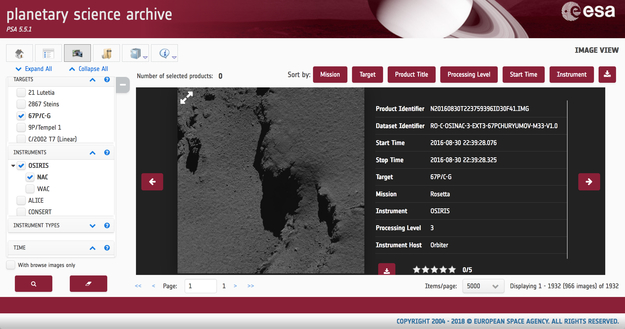
We are pleased to announce that VMC data for the years 2007-2019 is soon-to-be available on the ESA Planetary Science Archive, alongside that of the data from other Mars Express instruments. Our hope as a VMC team is that by making this data available on the PSA, the Mars community will have the opportunity to use VMC data for further studies of Mars.
Science with VMC
When it comes to the science, the VMC science team in Bilbao has been working incredibly hard. In 2018, the team published a study on limb clouds and dust on Mars using VMC images. They also published a study on a recurring annual cyclone, which appears in the northern hemisphere during summer and is accompanied by a second vortex. VMC data was instrumental in studying this double cyclone.
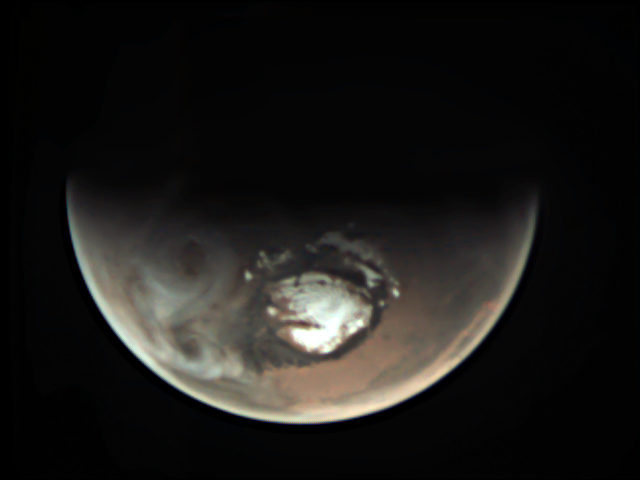
In 2019, the team published a study of the 2018 global dust storm over the south pole. The team has also presented at a number of conferences, both about the VMC itself, and using VMC data for science. These scientific studies include looking at patterned textures in dust storms, twilight clouds, dynamical phenomena in the atmosphere, and an elongated cloud over Arsia Mons – a cloud which also caught the attention of the public.
What’s next?
The VMC team have a paper about the Arsia Mons Elongated Cloud (AMEC) in review, and are also working on a study of Mars twilight clouds. Of course, the VMC will continue to take images of our favourite Red Planet, published on Flickr for us all to enjoy.
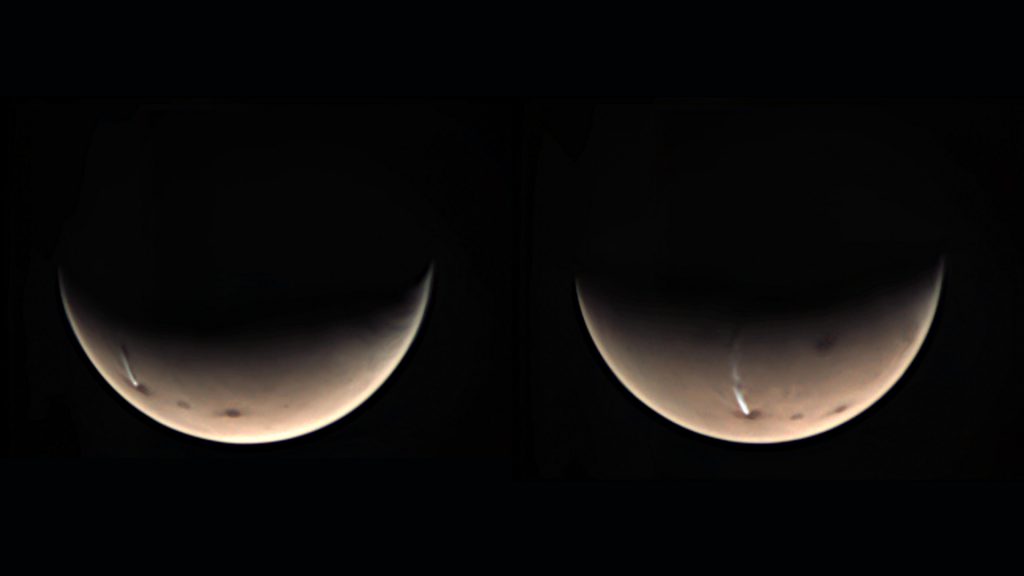
We’re proud of what we have been able to achieve with VMC so far, and excited for what can be done with the VMC in the future. The ESA Mars webcam may be small, but rest assured, it is mighty!

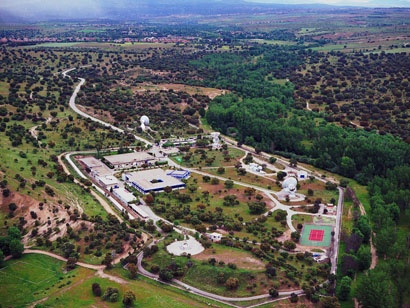
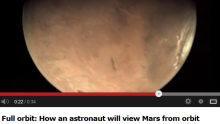
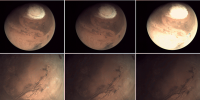
Discussion: no comments